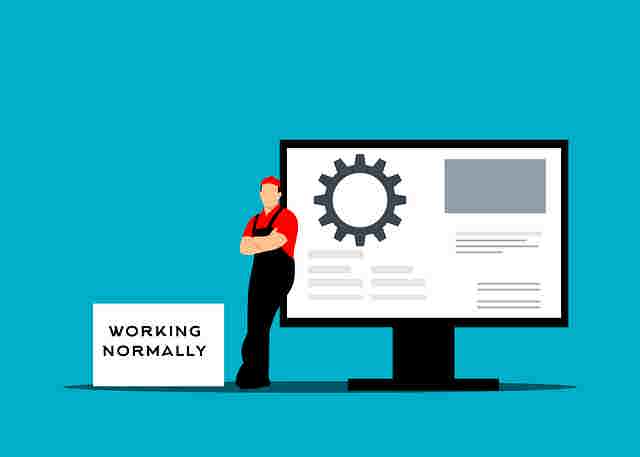Let’s be honest—kalibraatio may sound like one of those technical words you hear in workshops, engineering textbooks, or during company audits. But the truth is, it’s far more than just a fancy term tossed around in professional settings. Kalibraatio, the Finnish word for calibration, is actually one of the most important practices in the world of technology, manufacturing, engineering, and healthcare.
Imagine you’re a musician. You could have the most expensive instrument in the world, but if it’s not in tune, your music will sound awful. In much the same way, a technician might have cutting-edge equipment—but if it’s not calibrated properly, the results it produces could be dangerously inaccurate. That’s where kalibraatio steps in.
What Is Kalibraatio?
The True Definition Behind the Term
At its most basic level, kalibraatio (calibration) is the comparison of a measurement device to a known and trusted standard. The purpose is to ensure that the device is delivering accurate readings—within acceptable limits or tolerances.
Think about your bathroom scale. If it says you weigh 75kg but you actually weigh 72kg, you’ve got a calibration problem. Now take that concept into a hospital, where a medical device needs to measure a drug dosage or monitor a heart rate. Inaccuracy there could be life-threatening.
Calibration is not about fixing broken equipment. It’s about verifying and, if necessary, adjusting the accuracy of a working instrument to match a standard.
Calibration vs. Adjustment vs. Verification — What’s the Difference?
Here’s where things get a bit confusing. Many people think calibration, adjustment, and verification mean the same thing—but they don’t. Knowing the difference is important:
- Calibration is the process of measuring the performance of an instrument by comparing it to a reference standard.
- Adjustment is the act of physically or digitally correcting an instrument to bring it within acceptable range.
- Verification is a simple check to confirm if a device is functioning within specified tolerances, without necessarily adjusting it.
So, calibration is about measuring performance, adjustment is about changing performance, and verification is about checking performance. All are essential parts of a technician’s job, but each has a unique purpose.
Where and When Kalibraatio Is Needed Across Industries
Kalibraatio isn’t limited to a lab or a manufacturing plant—it plays a major role across a wide range of industries:
- Manufacturing: To ensure consistent quality and reduce defects.
- Medical and Healthcare: For accurate diagnosis, treatment, and patient safety.
- Aerospace and Aviation: Where even a slight error can mean catastrophic failure.
- Pharmaceuticals: Ensuring that drug formulations are precise and safe.
- Energy and Utilities: To manage consumption, reduce waste, and maintain system efficiency.
- Automotive and Electronics: Where sensors, automation systems, and diagnostics rely on accurate data.
No matter where you work, if measurements matter, so does calibration.
How Kalibraatio Works
How Environmental Factors Influence Calibration
Most people don’t realize that the surrounding environment can affect the accuracy of measurements. But it’s true—temperature, humidity, air pressure, vibration, and even magnetic fields can all influence an instrument’s performance.
For example, a scale calibrated at sea level might give a slightly different reading at a higher altitude. Or a temperature sensor used in a humid factory might drift faster than one used in a climate-controlled lab.
That’s why many calibration procedures are done in controlled environments, and why it’s so important to consider environmental conditions during calibration. If you ignore these factors, your calibration might not be valid in real-world use.
The Role of Measurement Uncertainty and Tolerances
One of the most important concepts in calibration is measurement uncertainty. Every measurement has a small margin of error—nothing is ever 100% precise. As a technician, your job is to minimize and understand this uncertainty.
Let’s say you measure 10 volts and your instrument has an uncertainty of ±0.1 volts. That means the true value lies somewhere between 9.9 and 10.1 volts. The tolerance is the maximum allowed deviation for the device to still be considered acceptable.
Calibration helps you determine whether a device falls within its allowable tolerance—and whether it’s safe to keep using it.
Primary, Secondary, and Working Standards Explained Simply
There’s a hierarchy to calibration standards, and it’s crucial to understand how they relate:
- Primary Standards are maintained by national or international institutions like NIST (National Institute of Standards and Technology). These are the most accurate reference points.
- Secondary Standards are calibrated against primary standards and used in labs for further calibration.
- Working Standards are what you, as a technician, will use daily. They’re reliable but must be regularly checked against higher standards to ensure accuracy.
This chain of traceability ensures that every measurement can be tracked back to a trusted source.
What You Need to Calibrate Like a Pro
Essential Calibration Tools and Equipment
Depending on your industry, you might use:
- Calibrators (voltage, current, pressure, temperature)
- Standard weights and balances
- Deadweight testers
- Reference thermometers
- Oscilloscopes
- Micrometers and calipers
- Multimeters and signal generators
Having the right tools—and keeping them in top condition—is essential. Just as a chef needs sharp knives, a technician needs precise instruments.
Digital vs. Analog Tools: Pros and Cons
Digital tools offer greater precision, easy data recording, and integration with modern systems. However, they can be sensitive to environmental factors and may require more frequent updates or recalibration.
Analog tools are often more durable, cost-effective, and simple to use. They’re ideal for environments with heavy vibration or extreme conditions.
The right choice depends on your application. Many professionals use both, depending on the job.
Software and Systems That Streamline Calibration Workflows
Technology has made calibration faster and more reliable. With calibration software, you can:
- Automate scheduling and reminders
- Generate certificates instantly
- Track instrument history
- Create audit-ready reports
- Access cloud-based logs remotely
Popular systems include Fluke MET/TEAM, Beamex CMX, and Calibration Control. If you’re still using spreadsheets or paper logs, it may be time to upgrade.
Common Mistakes Technicians Make—And How to Avoid Them
Let’s talk about where things often go wrong—and how you can avoid making the same mistakes.
Overlooking the Calibration Schedule
Skipping scheduled calibrations is like ignoring oil changes for your car. Eventually, something will go wrong—and when it does, it can be expensive or dangerous.
Set reminders, stick to your plan, and never assume an instrument is still accurate just because it worked yesterday.
Using Tools That Aren’t Certified or Traceable
Your calibration is only as good as the reference you use. If your standards aren’t traceable to a recognized authority, your calibration doesn’t hold up—especially in audits or legal scenarios.
Always work with certified, traceable equipment.
Not Documenting Calibration Results Properly
If you don’t write it down, it didn’t happen.
Good documentation includes:
- The calibration date
- Who performed it
- The method and results
- Deviations and adjustments
- Next due date
This isn’t just bureaucracy—it’s your proof of compliance and quality.
Step-by-Step Guide to Proper Kalibraatio
Preparation: Cleaning, Checking, and Verifying the Equipment
Start by preparing:
- Clean the instrument and remove debris.
- Inspect it visually for damage or wear.
- Make sure you’re working in suitable environmental conditions.
Skipping prep is a rookie mistake—and it compromises your accuracy.
Executing the Calibration Process with Consistency
The process usually looks like this:
- Connect the device to the standard.
- Apply known input values (e.g., voltage, pressure).
- Record the output or displayed reading.
- Compare the output with the known standard.
- Calculate deviation.
- If necessary, adjust the device or mark it as “out of tolerance.”
Consistency and attention to detail are everything here.
Recording and Reporting: Keeping Calibration Logs That Matter
Once calibration is complete, log:
- Instrument ID
- Technician’s name
- Standard used
- Deviation values
- Adjustments made
- Environment conditions
These logs should be clear, complete, and securely stored.
One Size Doesn’t Fit All
Kalibraatio in Manufacturing and Production Lines
In large-scale production, even a tiny measurement error can lead to thousands of defective products. Accurate sensors, gauges, and systems ensure consistency and prevent costly recalls.
Importance in Aerospace, Automotive, and Electronics
These fields demand absolute precision. A small error in a flight sensor or vehicle control system could be catastrophic. That’s why these industries invest heavily in rigorous calibration systems.
Medical and Pharmaceutical Applications: Why Precision Is Critical
In these industries, lives are quite literally on the line. Medication dosages, surgical instruments, and diagnostic equipment all need to be perfectly calibrated to ensure patient safety and regulatory compliance.
Understanding Calibration Intervals
The Myth of “Once a Year” Calibration
Many people assume that calibrating once a year is enough. But the reality is more complex.
Some tools need monthly calibration. Others may go two years. It all depends on the tool’s purpose and usage.
Risk-Based Calibration Schedules
A smarter approach is risk-based calibration, which takes into account:
- How critical the instrument is
- The risk of failure
- Frequency of use
- Operating environment
Higher risk = more frequent calibration. Simple.
How Usage Frequency and Environment Play a Role
Heavy use, high heat, vibration, moisture—these things all shorten an instrument’s reliable calibration interval. If your tools work hard in rough conditions, they need more love and care.
Regulatory Requirements and Standards
ISO, ANSI, and Other Key Standards Technicians Should Know
Knowing your standards is part of being a professional:
- ISO/IEC 17025: General standard for testing and calibration labs.
- ANSI/NCSL Z540-1: U.S. national calibration system.
- ISO 9001: Quality management that includes calibration elements.
Familiarity with these can help you stay compliant—and impress during audits.
Traceability and Accreditation Explained
Traceability ensures every measurement can be linked to an accepted standard. Accreditation means a lab meets strict quality criteria. Together, they create a chain of trust in your data.
Why Regulatory Audits Check Your Calibration Protocols
Auditors look for solid processes, accurate documentation, and proof of traceability. Weak calibration protocols can lead to lost certifications, lawsuits, or worse.
Kalibraatio in the Digital Age
How IoT and AI Are Changing Calibration Methods
IoT-enabled devices now offer real-time monitoring and self-diagnostics, alerting technicians when calibration is due. AI systems can analyze trends and predict future failures before they happen.
This means calibration is becoming smarter—and more preventive.
Remote Calibration and Cloud-Based Documentation
Cloud-based calibration systems allow you to:
- Monitor tools remotely
- Store and share data instantly
- Reduce downtime
This kind of connectivity is transforming traditional workflows.
Upskilling Opportunities for Technicians in the Calibration Space
Calibration is evolving. Technicians with skills in:
- Data analysis
- Software tools
- Regulatory compliance
- Smart device calibration
…will be in high demand. The more you learn, the more valuable you become.
Conclusion
So now you know—kalibraatio isn’t just a buzzword. It’s the backbone of quality, safety, and precision in modern technology. As a technician, understanding and applying these calibration principles can elevate your career, build your credibility, and keep systems running with pinpoint accuracy. Whether you’re working in a factory, a hospital, a lab, or the field—every time you pick up a calibrated tool, you’re holding trust in your hands.
And now, you’re ready to master it. So why should every technician care about mastering kalibraatio? Because understanding it will give you a competitive edge, help maintain high-quality standards, and set you apart as a true professional in your field.
Let’s dive deep into what it’s all about—and uncover the secrets every technician must know.



